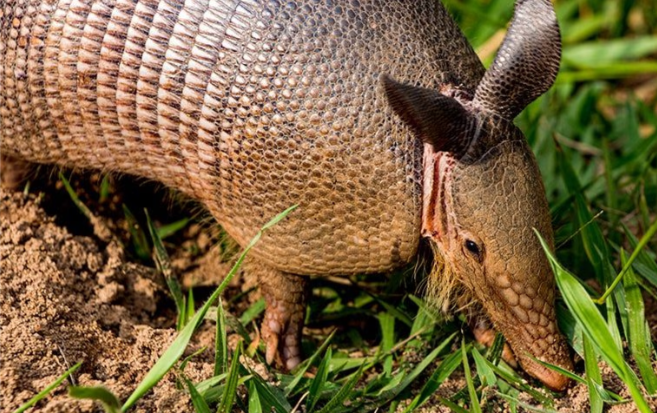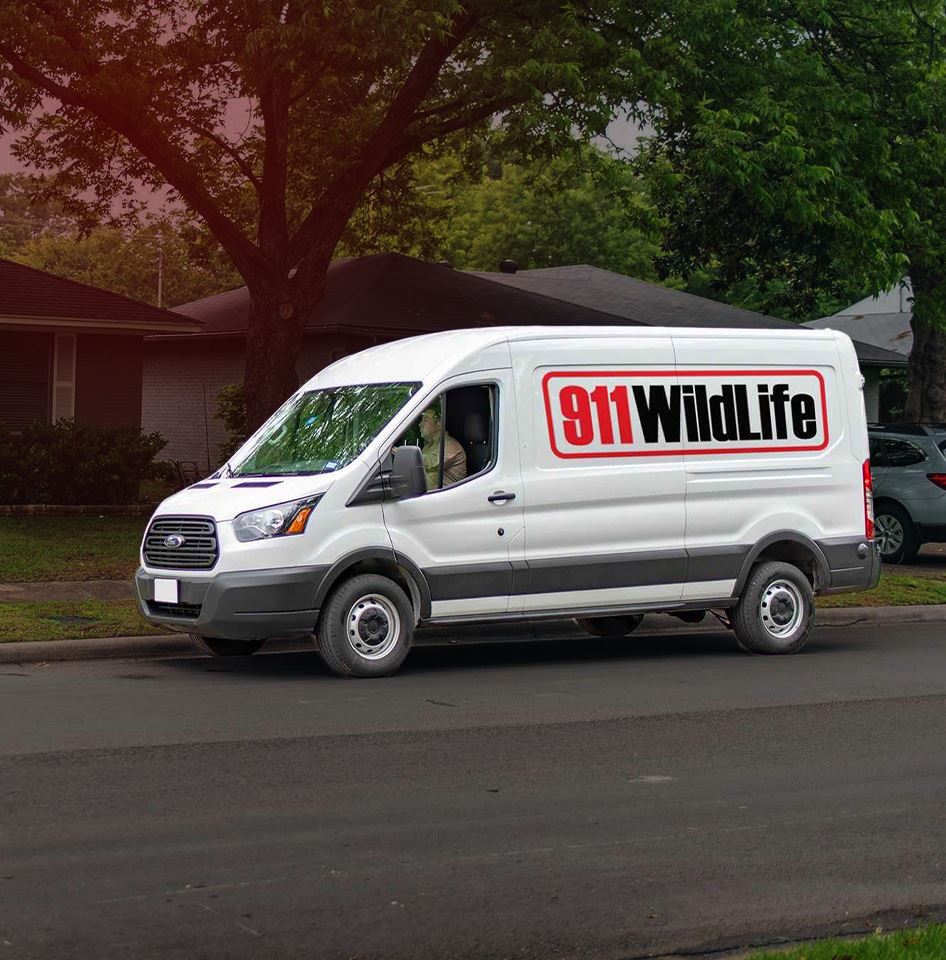
Armadillos

Armadillos digging in your Houston, Dallas/Fort Worth, TX and surrounding areas yard can be discouraged by applying Beneficial Nematodes. Beneficial Nematodes are microscopic worms that devour grubs and other soil-dwelling pests such as fleas, fire ants, and termites. No grubs = no armadillos digging in your yard.
911 Wildlife can assist you with evicting an uninvited armadillo that has burrowed or nested under your structure. We do not trap and relocate them; however, we provide fast, affordable solutions to secure your property.
The armadillo is an armored mammal related to anteaters and sloths. The nine-banded armadillo is found in Texas, Oklahoma, Louisiana, Arkansas, Tennessee, Mississippi, and Florida, as well as South and Central America.
The layer of horn (hard material derived from hair) and bony plates that protect the animal against thorny plants is formed by the ossification of the greater part of the skin. The shoulders and rump are each covered by a single large shield, and the middle of the body is covered by transverse bands that are moveable and articulated. The three-banded armadillo found in South America can roll itself into a tight ball. The North American nine-banded armadillo tends to jump straight in the air when surprised, and consequently often collides with the undercarriage or fenders of passing vehicles.
The nine-banded armadillo exhibits delayed implantation, so the young are not typically born for eight months after mating. They are the only mammal that always gives birth to identical quadruplets.
Armadillos are often used in the study of leprosy, since they are among the few known non-human animal species that can contract the disease systemically. They are particularly susceptible due to their unusually low body temperature, which is hospitable to the leprosy bacterium. Humans can acquire a leprosy infection from armadillos by handling them or consuming armadillo meat. Prior to the arrival of Europeans in the late 15th century, leprosy was unknown in the New World. Given that armadillos are native to the New World, at some point they acquired the disease from humans.
Despite short legs, the armadillo moves relatively quickly, and with its strong feet and thick claws it can burrow with considerable speed. It is generally nocturnal and feeds on insects and their larvae, especially grubs. It has poor eyesight, but an excellent sense of smell which it uses to detect underground food.
Our Reviews
-
"Quick and excellent service."
911 Wildlife did a great job quickly resolving a raccoon problem. The entry was in a complex spot on the 2nd story of my ...
Harry A. -
"Conscientious and reliable service."
911 Wildlife was great to work with. They were conscientious, showed concern for our situation, and made a plan to address ...
Marti W. -
"Reliable & Friendly"
911 Wildlife was very prompt at returning my initial inquiry and getting me all the info I needed and at a good price. Reliable and friendly employees make the difference!
Katie K. -
"Excellent Service"
911 Wildlife is my immediate go-to for rodent control. Devin is the best. Don’t waste time finding the source of those pesky critters. Always fair pricing and excellent service. I highly recommend.
Kathleen C. -
"Very Professional"
Rob and his team arrived on time and installed grating, patched a hole, and installed a one-way outlet to evict a raccoon from my attic. They are professional and easy to work with. I recommend their services!
David M. -
"Great Job"
These people know how to deal with varmints in an informed humane way. They know animals and know how to manage them without harm to them or you. Call 'em now if you've got raccoons, possums, squirrels or even rats in the attic. They serve FORT WORTH as we
Claudia C. -
"Great job identifying and sealing entry points."
We had signs of wildlife in our attic, including snakes and rats. 911 Wildlife did a great job identifying and sealing entry ...
Chris M. -
"Great Service"
Our technician Ryan was the best. He was prompt and very thorough... He repaired the roof and flashing, and re-painted beautifully. The squirrels are gone! The service is effective and humane. I completely recommend!
Katherine G.

Recent Blog Articles
Our Tips & Tricks
-
 How Local Wildlife Reacts During Houston & DFW HeatwavesRead More
How Local Wildlife Reacts During Houston & DFW HeatwavesRead More -
 The Importance of Humane Wildlife ControlRead More
The Importance of Humane Wildlife ControlRead More -
 Summer Wildlife Problems In TexasRead More
Summer Wildlife Problems In TexasRead More -
 Who Do I Call to Get Wildlife Out of My Home?Read More
Who Do I Call to Get Wildlife Out of My Home?Read More -
 What is the Best Way to Get Rid of Rodents?Read More
What is the Best Way to Get Rid of Rodents?Read More -
 5 Tricks to Get Wildlife Out of Your HomeRead More
5 Tricks to Get Wildlife Out of Your HomeRead More -
 Common Entry Points: How Wildlife Enters Your Home and How to Seal ThemRead More
Common Entry Points: How Wildlife Enters Your Home and How to Seal ThemRead More -
 Understanding the Risks: Health Hazards Associated with Wildlife in Your HomeRead More
Understanding the Risks: Health Hazards Associated with Wildlife in Your HomeRead More






.2409240436213.jpg)







